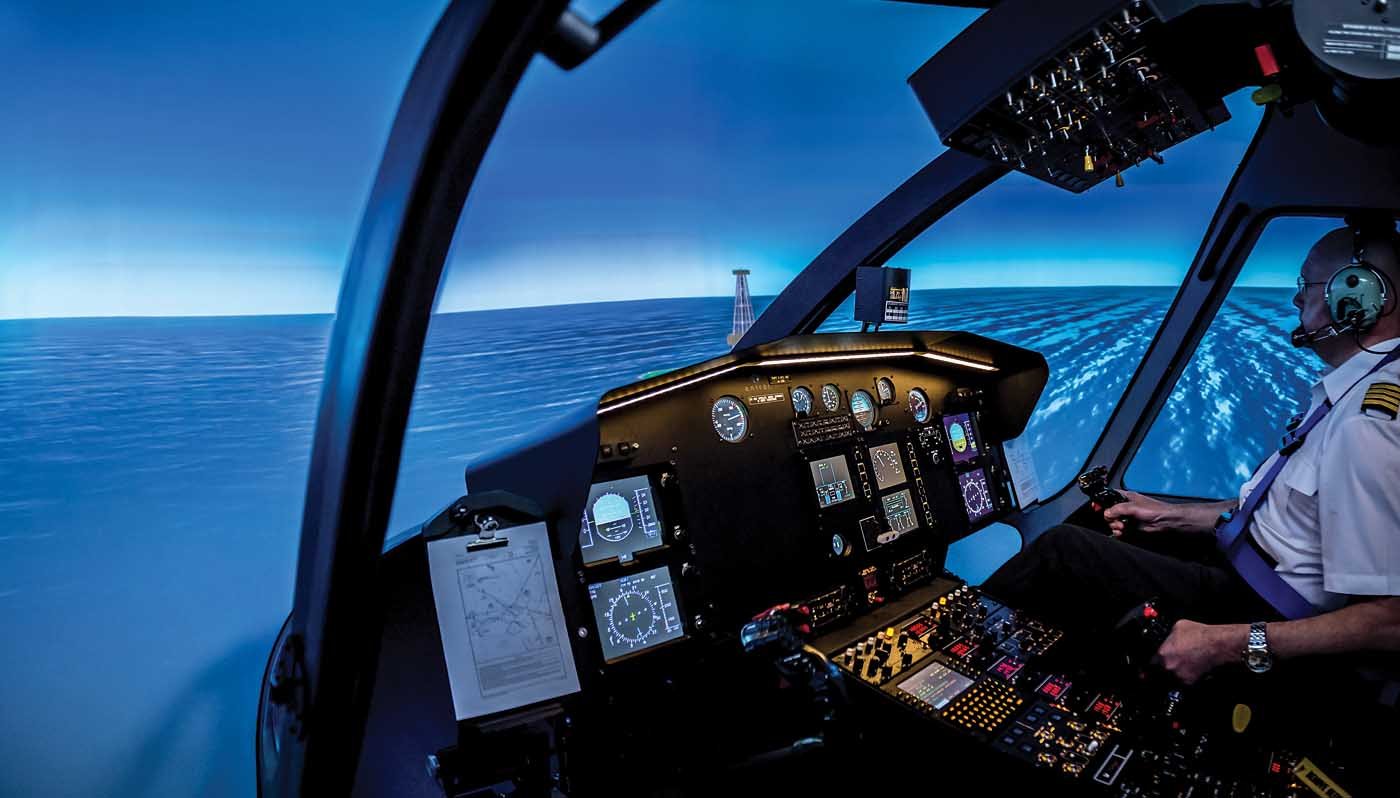The designers of flight simulators are masters of illusion. Whether it’s a procedures trainer or an “I-can’t-believe-these-visuals,” full-motion helicopter simulator, a session in a sim can stimulate, or even overwhelm the senses. Invaluable for instruction and recurrent training, pilots train for things in a sim that they hope they’ll never see in real life — and can come out of a simulated flight dripping in sweat.
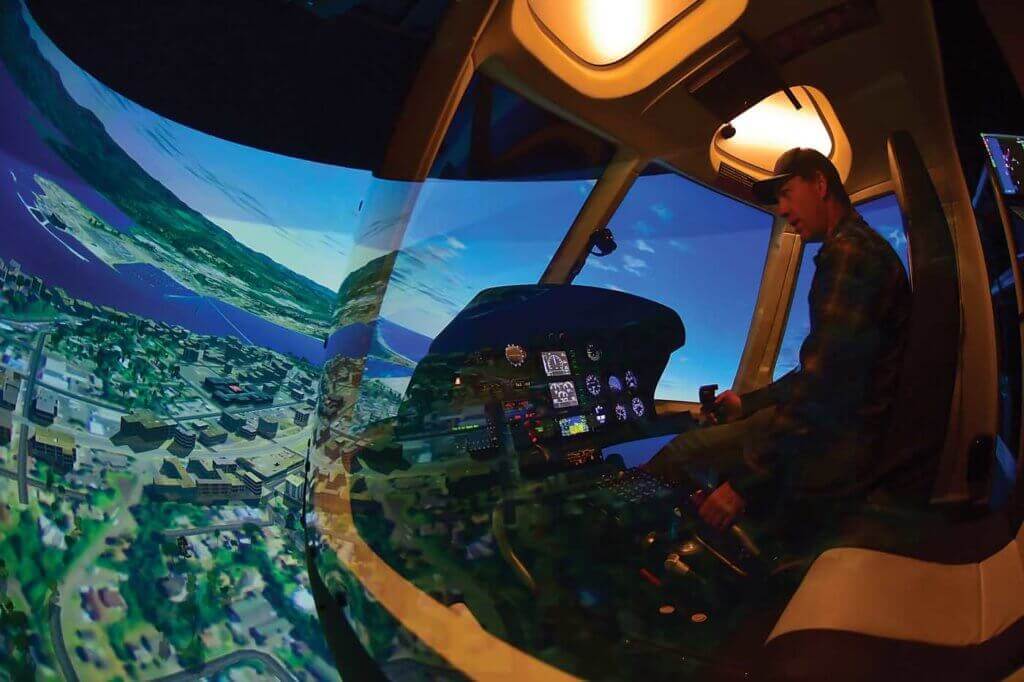
Although the basic concept of a simulator hasn’t changed for decades, the unrelenting advancement of visual and computing technologies have resulted in highly realistic training environments. Augmented reality (AR), virtual reality (VR), and mixed reality (MR) are the shiny new tech toys appearing in many sectors, and they may migrate to helicopter training.
VR is totally immersive, with a user wearing a visual display and having a method of interacting with the digital environment. AR users wear a see-through display, and the system overlays information on the user’s field of view. A head-up display is an example of AR, with flight instrument data displayed while the pilot stays “eyes out.” MR combines the two, where users can manipulate physical and digital elements in the real world.
Will this tech surface in sims? And what other interesting projects are underway? To find out, Vertical reached out to several simulator manufacturers.
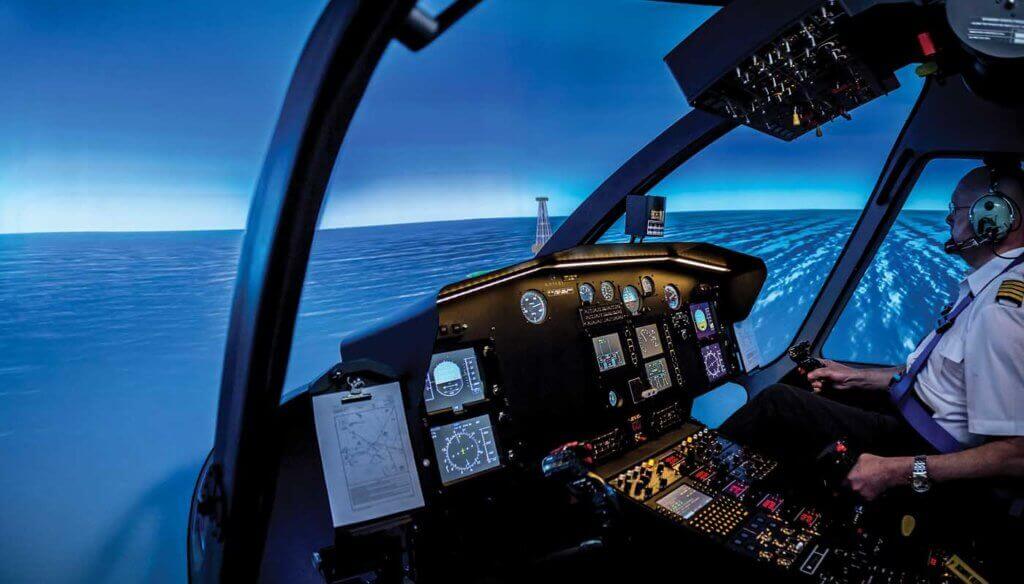
“We are considering AR goggles in the future, as well as AR/VR systems together with current simulation,” said Nacho Navacerrada, business manager at Madrid, Spain-based Entrol. “There are still many hurdles to solve, but we are confident this technology could be integrated with current simulation. AR technology is improving very quickly and it will be a game changer that will open a lot of new possibilities for helicopter training.”
Operating since 2005, Entrol manufactures simulators for machines from the Cabri G2 right up to the Bell 412 and AW139. “Each year we try to develop two new helicopter models,” said Navacerrada. “We have focused on helicopter simulators and we offer flight training device [FTD] specific quality for the costs of flight and navigation procedures trainers [FNPT]. We entered the market without preconceptions — that way, our flight modelling and certification ‘know how’ are different from the standard approach. Our approach means a significant cost reduction and we have been able to pass the efficiencies to the end-customer.”
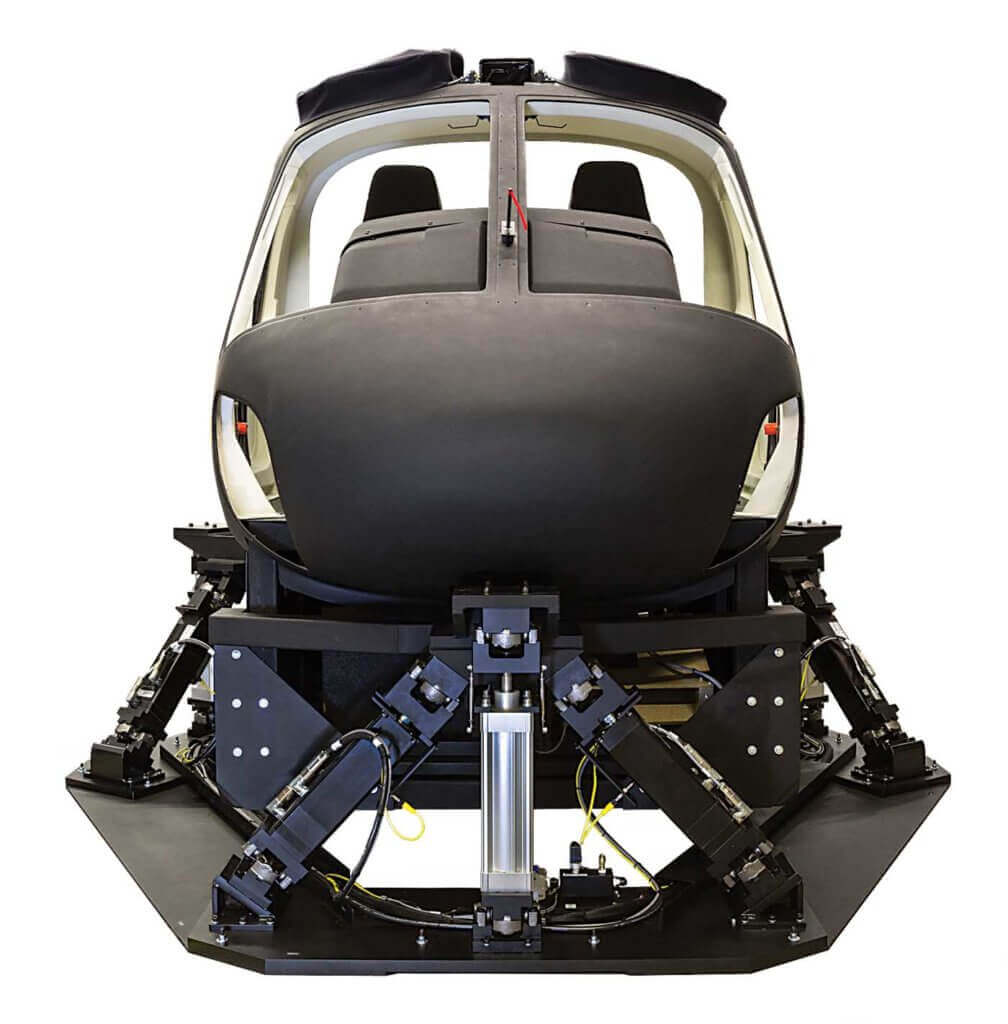
Entrol has enhanced its simulators with the development of a spherical visual system that accesses high-resolution scenery databases, and a vibration system. “We have seen significant improvements in image generators and databases,” said Navacerrada. “They are reaching the level of [the] gaming industry, there is plenty of satellite imagery, and environments are more realistic than ever.”
Improving the view
Last year, FlightSafety International celebrated its 65th year of operations. In addition to its wide-range of fixed-wing simulators, the company has 24 helicopter full-flight sims and advanced training devices in facilities from Dallas, Texas, to Stavanger, Norway, covering a diverse lineup of machines from all major manufacturers.
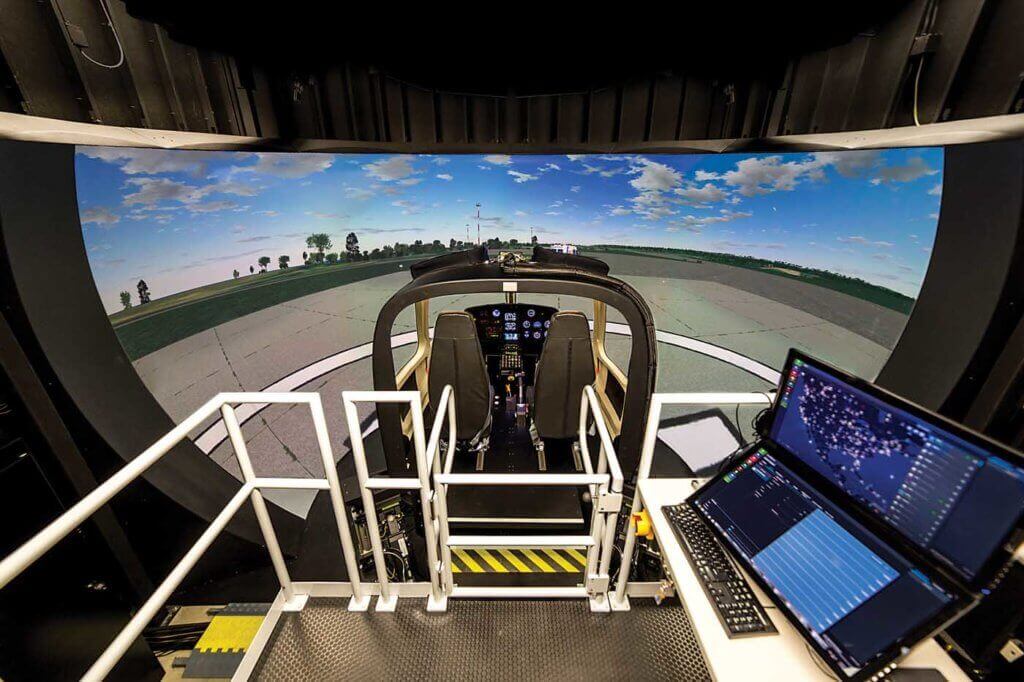
The view out the window has seen the greatest improvements over the past 10 years, said Scott Goodwin, general manager, simulation. “The biggest change is the increased simulation fidelity that is possible through advances in computer technology,” he said. “Increased processing speed and storage make technologies such as photo realistic visual displays possible, vastly increasing the realism of the simulation.”
To have the visuals look as realistic as possible, new processors have the capability to crank up the frame rate on the display equipment. “Most of our delivered systems now support 120Hz frame rates to deliver the highest, artifact-free resolution to critical dynamic training tasks,” said Ed Koharik, general manager, visual systems. “We have shown that for the most critical training tasks, faster pixels beat more pixels and have configured our systems accordingly.”
And as AR technology migrates to cockpits, there’s a bit of wheel-within-a-wheel process unfolding, said Koharik. “If AR gains a foothold in the real world, we will need to simulate it.”
FlightSafety is keeping its focus on displays, and Koharik sees continued improvements in the technology. “After dynamic resolution, improved system contrast is probably the next area ripe for improved end user experience,” he said. “We are working on a range of optical and digital techniques to improve system contrast. We are rapidly advancing our display mirror, dome, and screen configurations and manufacturing capabilities.”
Hand-in-hand with the improvements in simulation technology, the company has introduced a new training methodology called Operational Day Flow, where pilots learn tasks and procedures according to phase of flight, rather than being introduced to them one system at a time.
Reproducing a realistic hover
The team at Urbana, Illinois-based Frasca International have developed new innovations that address two limitations in helicopter simulators: the challenge of reproducing a realistic hover, and the tendency of pilots to “chase” the sim.
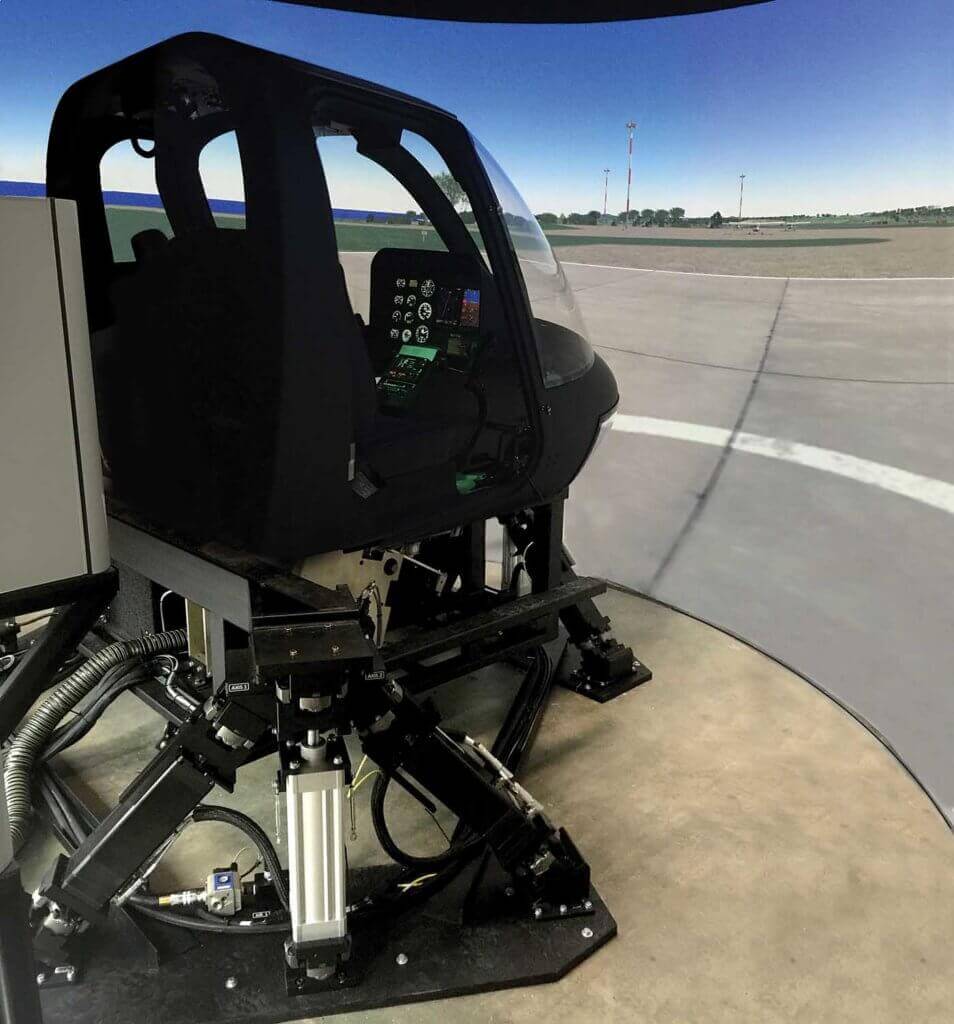
“We designed this system to increase the fidelity and the accuracy of simulating hover,” said Randy Gawenda, business development manager for Frasca. “Since we are not moving a lot of weight — we are just moving the cockpit, not the motion base, frame, visual screen, and projectors — we are able to deliver motion and vibration cues at a 60 Hz rate which provides the proper timing of onset cues, the seat-of-the-pants ‘feel.’ ”
The company’s SimAssist detects pilot-induced oscillations in a simulator and reduces flight control sensitivities, allowing pilots to quickly acclimatize to the sim. “It can also help ab-initio students. If you were to think of SimAssist as the instructor riding the controls while you fumbled around trying to hover, you would have the same thing, just via the software,” said Gawenda. “The interesting feature is that the software is adaptive, so it will automatically adjust based on the changes in student performance that the system detects.
“For students doing self-paced learning, it can keep them ‘in the envelope’ and help them towards producing the muscle memory required to make controlled, minute inputs to the flight controls.”
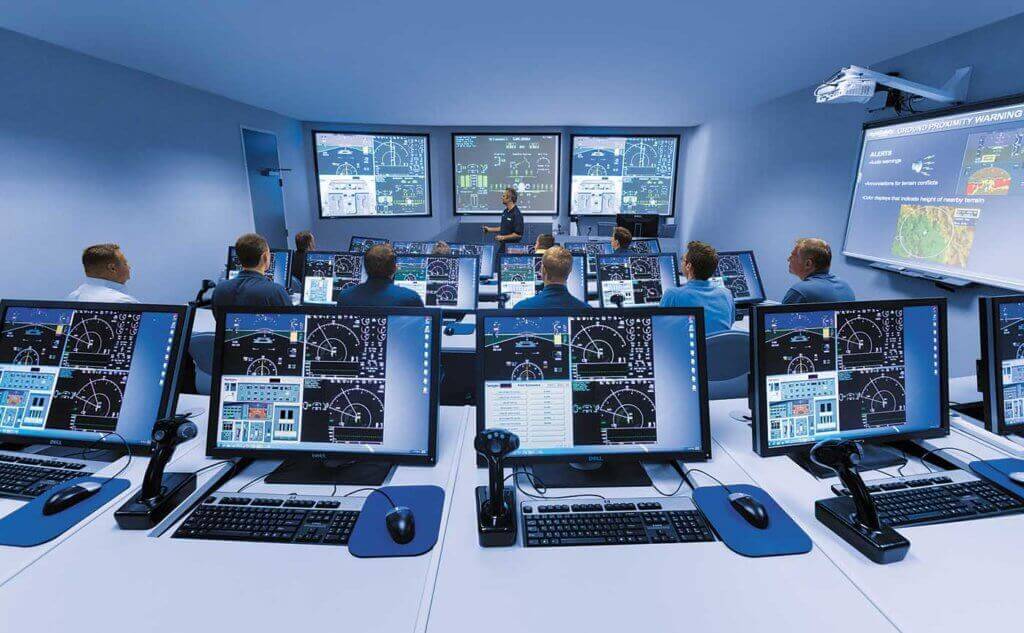
Frasca specializes in rotorcraft simulation, and has developed equipment from cockpit procedures trainers to Level D full-flight simulators for machines from the R22 up to S-92- and EC225-sized aircraft, according to Gawenda.
At TRU Simulation + Training, Troy Fey, vice president of technology, said improving helicopter safety remains a significant challenge. “I truly believe simulator training needs to play a bigger role in the solution,” he said. “Time will tell whether regulation changes support my belief.”
While Fey doesn’t see any specific new technology changing the fundamental nature of flight simulators, he does look to technology to improve the rate and effectiveness of learning. “I’d expect simulator standards and regulations to evolve as technology and industry demand warrant it. Before that, I expect we’ll see more training in a wide variety of non-qualified devices; they’ll provide cost effective opportunities to better prepare pilots.”
TRU builds simulators for Bell, Leonardo and Airbus machines, and Fey says that the company’s approach to sim development is a mix of art and science. “The ‘secret sauce’ is and always has been the way in which we develop and integrate complex physics based models with the simulator cueing systems — it’s scientific methodology practiced by artisans.”
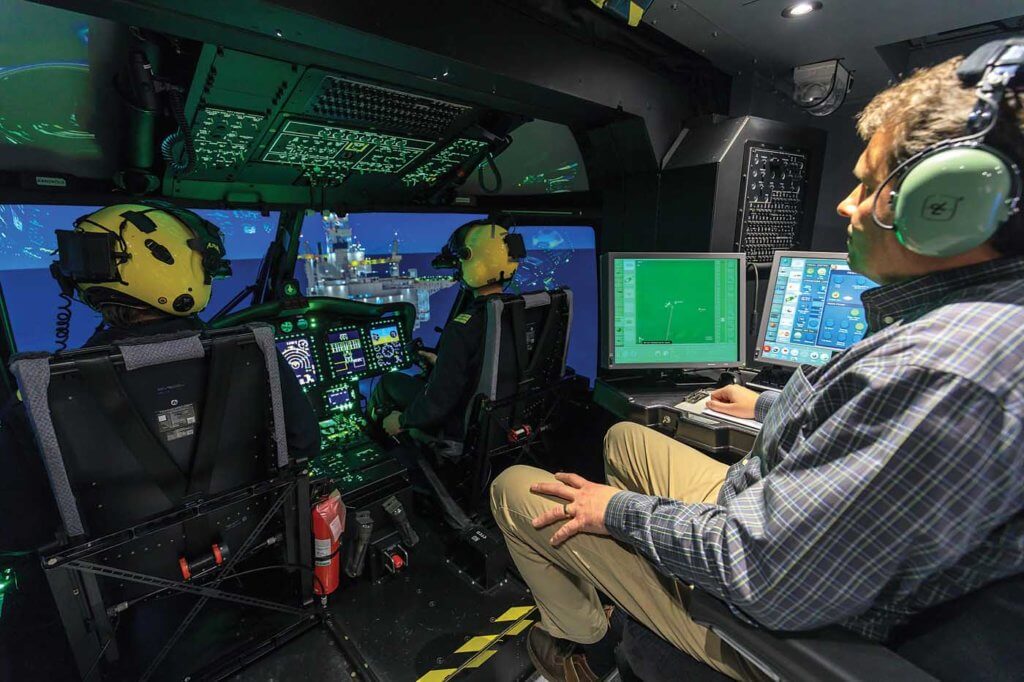
And while TRU is evaluating AR and VR, Fey says that “we’re not getting too caught up in them. We are exploring many other means to advance training and human performance.”
Exploring new training concepts
Montreal-based CAE has been producing flight simulators since the mid-1950s. In 1982, CAE was the first to develop what is now known as a Level D simulator. Alongside its joint-venture partners, CAE has deployed over 20 full-flight simulators across its global civil aviation training network for Bell, Airbus, Leonardo and Sikorsky helicopters.
Nick Leontidis, CAE’s group president, civil aviation training solutions, said that the company is “monitoring” AR and VR technology, and is “exploring and testing a few concepts as we see potential in the areas of ground school training solutions. We are also leveraging technology advances from our healthcare division.” That technology is the CAE VimedixAR, an ultrasound training simulator integrated with the Microsoft HoloLens, allowing learners to interact and move freely within a clinical training environment that is augmented with holograms.
Last year, CAE announced the launch of the validation phase of its Next Generation Training System in partnership with airline AirAsia. “The system uses the latest technology, big data and analytics in a process that provides instructors with opportunities to assess objectively, better read the data, and understand the strengths and weaknesses of each pilot,” said Leontidis.
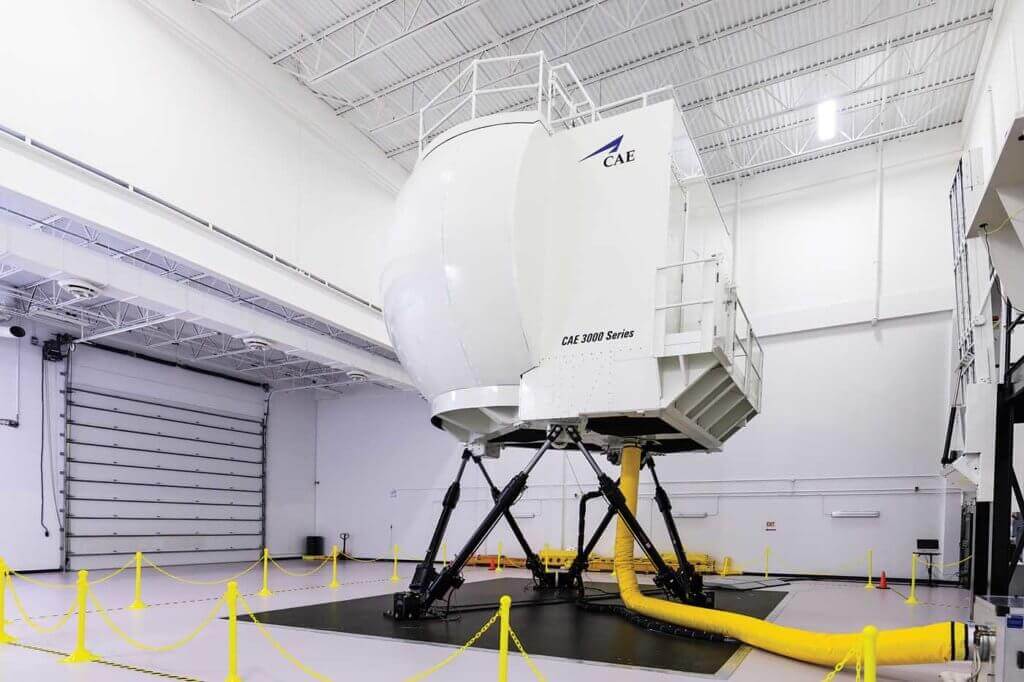
Recognizing the challenges facing the sector and helicopter training in particular, Leontidis says that “CAE will continue to monitor the market and evolve its strategy accordingly, leveraging technology advances in commercial, business and military aviation training.”
There’s little argument that safety and ongoing training are inexorably linked, an opinion shared throughout the industry.
“The main driver for changes in training within the helicopter industry is the increased focus and emphasis on safety,” said Steve Phillips, FlightSafety’s vice president of communications. “This is resulting in more frequent in-depth training using advanced Level-D qualified simulators as opposed to training in an actual helicopter.”
Entrol’s Navacerrada believes that advances in helicopter simulator technology can narrow the gap between fixed- and rotary-wing pilot training. “Helicopter pilots can receive more training, similar to fixed-wing commercial training where the use of simulators is very standardized,” he said. “We hope that helicopter pilots will get as much synthetic training as fixed-wing pilots. The key to this goal is to reduce operating and purchase costs of the helicopter simulators.”





